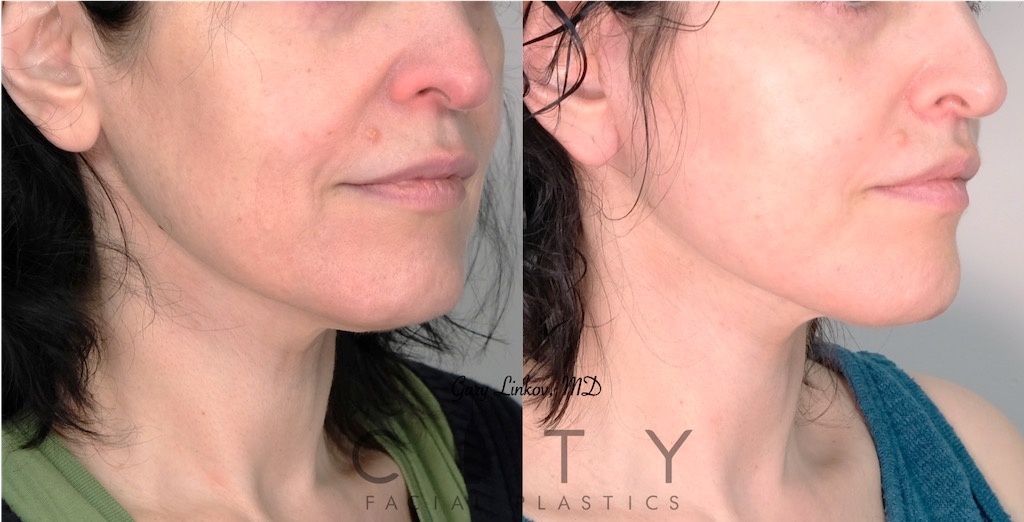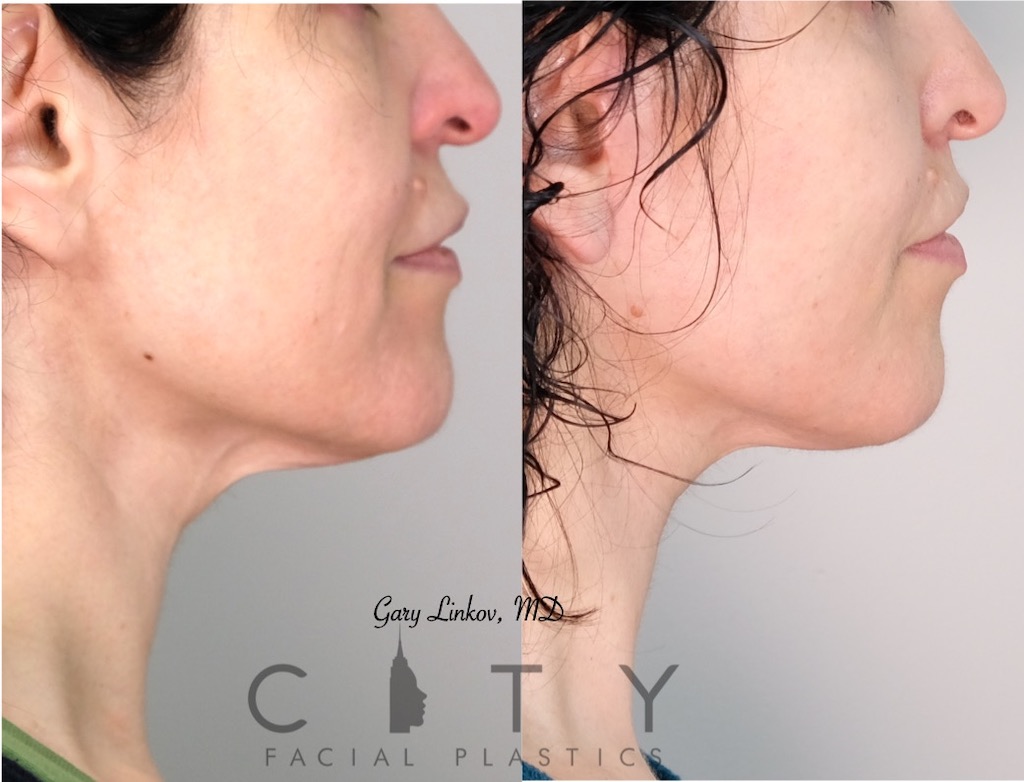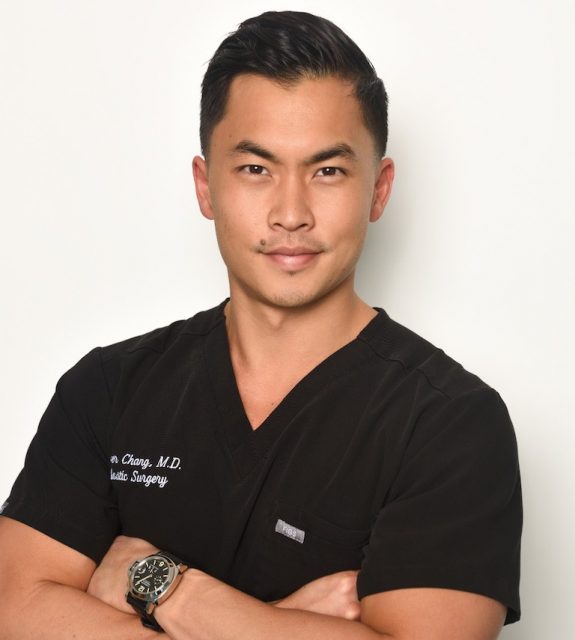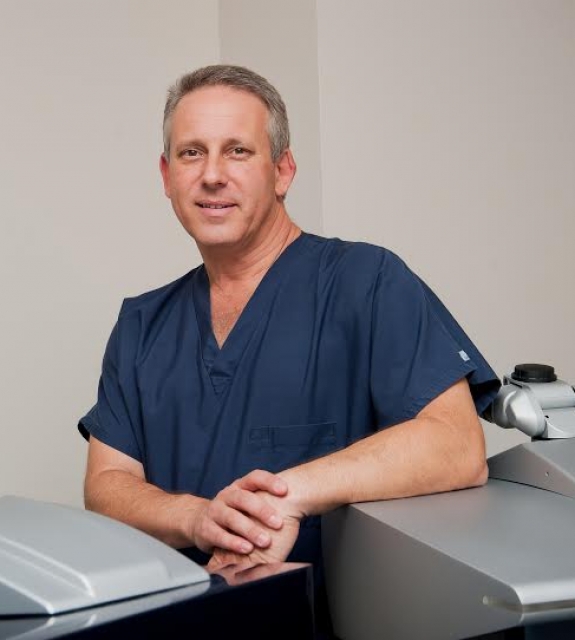Dr. Gary Linkov is a dual Ivy League educated facial plastic surgeon. A native of New York, he graduated as salutatorian from Cornell University with a focus on psychology. Before, during, and after his undergraduate years, Dr. Linkov pursued advanced art training in painting, sketching, and sculpture, including a six-week scholarship program in Florence, Italy at the Lorenzo de’ Medici Italian International Institute. Haute Beauty chats with Dr. Linkov, to learn more about the neck lift surgery.
 Photo Credit: Photo courtesy of Dr. Linkov
Photo Credit: Photo courtesy of Dr. Linkov
HB: What are some of the issues that neck lifts work to fix?
A neck lift is a family of treatments that address problems with fat, muscle and skin on your neck and jawline. It helps to correct excess flesh on the neck and jowls and gives a contoured and youthful appearance. If there is enough elasticity in the skin, you may benefit from having liposuction (removal of excess fat) alone. Patients may also require liposuction in combination with a platysmaplasty (tightening of the muscles of the neck), to produce a sculpted, angular and youthful jawline. Patients with loose facial and neck skin often choose both a neck lift and facelift. This is in addition to or instead of liposuction.
HB: What’s the typical age range of patients seeking a neck lift?
Most people seeking neck lift surgery are in their 50’s with excess skin and fat in the neck as well as other typical signs of aging. People in their 40’s often become interested in neck lift procedure once they first notice these signs of aging. Doing neck lift surgery early can be more effective, as the muscles are strong and the degree of lift can be more robust. There are a significant number of even younger people who desire neck lift procedure for congenital webbed neck, double chin, or other conditions resulting in an obtuse cervicomental angle.
HB: How does the procedure work?
Neck lift procedure surgery is tailored to not only your desired aesthetic outcome but also how your individual anatomy contributes to your current appearance. Therefore, it is challenging to answer the question “How is neck lift done?” in a way that accurately would describe every individual’s surgery. There are, however, some generalizable concepts in discussing the steps of neck lift surgery including mini neck lift procedure. These concepts are discussed below, not necessarily in the order of which they would be performed.
Making the incision
The first step of neck lift surgery is identifying and making the incision. Where are neck lift scars? These scars are located where the incision is made, and their location and length depend on the type of neck lift you are having; the incision will either be below the chin, in front of and behind the ears, or both. Dr. Linkov will first draw the anticipated incision line with a marker so you can review prior to proceeding to surgery.
Addressing subcutaneous fat
Once the incision is made, Dr. Linkov will visualize the subcutaneous fat. If there is excessive subcutaneous fat, it can be removed via surgical excision or liposuction. It is important not to remove too much subcutaneous fat, as the subcutaneous fat does play a role in cushioning the deeper neck structures and providing a normal skin contour to the neck. When too much subcutaneous fat is removed, it can result in a cobra neck deformity or other skin irregularities. Cobra neck deformity refers to a hollowed appearance in the middle of the neck with looser skin on the sides.
Addressing the platysma
For people with a weakened and loose platysma, the platysma can be addressed in two main ways. Parts of the platysma can be pulled together and sutured in such a way that the muscle is tightened. If the platysmal is particularly flabby, a piece of the platysma may need to be surgically removed. The remaining platysma is then sutured back together, resulting in a shortened but firm muscle. The suturing of the platysma is sometimes referred to as a “corset platysmaplasty”.
Addressing the subplatysmal fat
The subplatysmal fat lies deep to the platysma muscle. Since it is located deep in the neck, it can only be removed by surgical resection. It is not possible to perform liposuction on the subplatysmal fat due to the risk of damaging the deep neck structures such as blood vessels and nerves, which could lead to significant bleeding and nerve damage.
Addressing the digastric muscles
As mentioned above, some people have enlarged, or hypertrophied, digastric muscles which cause a fullness into the neck. It is often difficult, and sometimes not possible, to make this diagnosis without directly visualizing these muscles during neck surgery. If Dr. Linkov detects enlarged digastric muscles, a piece of the muscle can be removed, reducing its size and ultimately resulting in decreased neck volume.
Addressing the submandibular glands
If the submandibular glands are prominent, a piece or pieces of these glands can be removed to reduce neck fullness. The submandibular glands are close to important blood vessels and nerves, so it is important that these are removed with extreme caution and attention to detail.
 Photo Credit: Photo courtesy of Dr. Gary Linkov
Photo Credit: Photo courtesy of Dr. Gary Linkov
HB: How long is the recovery for neck lift surgery?
Bruising and swelling after plastic surgery neck lift are common and typically improve in 1-2 weeks. You will meet with Dr. Linkov the day after your surgery and then 5-7 days after your surgery to remove your stitches and drains if they were placed. Most people return to work in 1 to 2 weeks after surgery and resume regular activities such as exercise 2 weeks after surgery. Full results are usually seen at least 3 months after surgery, once swelling mostly resolves.
HB: Are results permanent?
Many patients have tried less invasive modalities to improve their neck appearance and have been disappointed. Most patients are very happy after neck lift surgery that is performed by an experienced facial plastic surgeon in Manhattan, NYC such as Dr. Linkov. Since the results of neck lift procedure are much more permanent than less invasive modalities, it may be a worthy investment if you are interested in a more youthful and refreshed appearance.
HB: Is there a way to maintain results?
Weight control is important for maintaining results after surgery.
HB: How much does neck lift surgery typically cost?
There are several factors that go into determining the price of neck lift surgery. These factors include the extent of the neck lift, location of your surgeon, experience of your surgeon, type of anesthesia, anticipated length of surgery, and whether or not the neck lift is combined with other surgeries. For neck lift surgery in NYC, the price for neck lift surgery alone ranges from $10,000 to $30,000 or more if additional procedures are done at the same time.





















